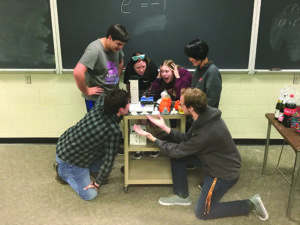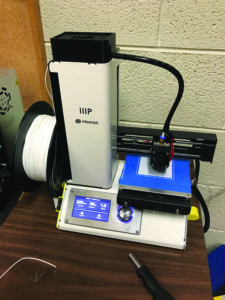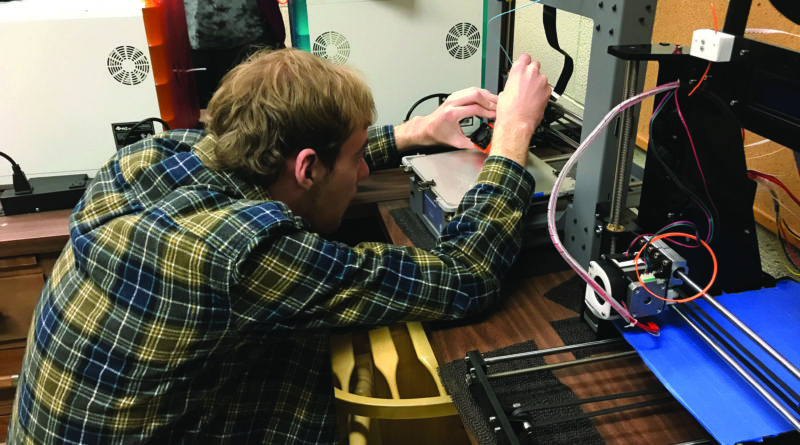Maryville College’s new 3D printing club tackles the world in a new dimension

3D printing is an ever-growing area of interest in recent years, placing emphasis on a new dimension of current design processes. While originally pricey and an expense, the push to make 3D printing open-source has made the software and machines more accessible than ever.
The Mathematics and Computer Science division at Maryville College has recently received several 3D printers to be used by faculty members and students. In addition, a faculty office was remodeled to become a “Maker Space” and is now the home of these new 3D printers.
The process of 3D printing at Maryville College began with a senior study project that involved 3D printing. Separately, Mr. Tobby Ryan in IT developed a 3D scan of the Covenant Stone, which the Keepers of the Covenant took to use as a prize for the Spirit of the Covenant award.
This new technology intrigued many students, including Megan Pogue, Anevay Nichol and Evan Roberson, who joined together to create MC3D, with the assistance of Dr. Jesse Smith and Dr. Chase Worley. “As more and more students began to utilize the 3D printers in Sutton, Dr. Worley and Dr. Smith proposed that the students form a 3D printing club,” said Nichol.
Soon after, flyers began appearing throughout campus to spread awareness and interest among the student body. After enough students expressed interest, they then submitted their proposal to become a student organization and received approval from SGA to make their presence on campus official.

“The club’s goal is to provide Maryville College students with the opportunity to learn about 3D printers and modeling software,” said Pogue. Why 3D print? 3D printing is now becoming widely used in STEM education and industry projects.
“In many businesses, 3D printers are a great way to bring a project from the idea stage to working prototype quickly and cost-effectively,”
said Dr. Jesse Smith. Beyond these applications, students can learn valuable software skills that are effective in the workplace.
“They are learning how to engineer the objects, think about the limitations and advantages of 3D printing, how to prototype and test their designs, and how to interact with the customer or employer in implementing their needs and suggestions,” said Dr. Smith.
Pogue stated that the MC3D has two types of projects: personal and professional. Students who want to express their creativity through 3D design have a new tangible outlet where they can not only design but print their own creations. The other types of projects involve completing tasks for professors at the college.
“We are currently designing petri dish shelves for Dr. Gibson’s labs and emblems for the upcoming Scots Science Scholars for Dr. Siopsis,” said Pogue. 3D printing has a large collaborative element to the process and models the stages of experimental design, which extends across all disciplines. Students have a chance to express their creativity and create a tangible product that could benefit more than themselves.
“There is something incredibly inspiring about creating a 3D object in the computer, loading a file on the 3D printer, and a few hours later holding the physical 3D object in your hand that was once just an idea,” said Dr. Smith.
The club meets every other Monday in Sutton 204 from 4:15-5:15 p.m., and may sometimes last until 6:00 p.m. For additional information, you may contact any of the student leaders or their faculty advisors: Dr. Smith [email protected] or Dr. Worley [email protected].

